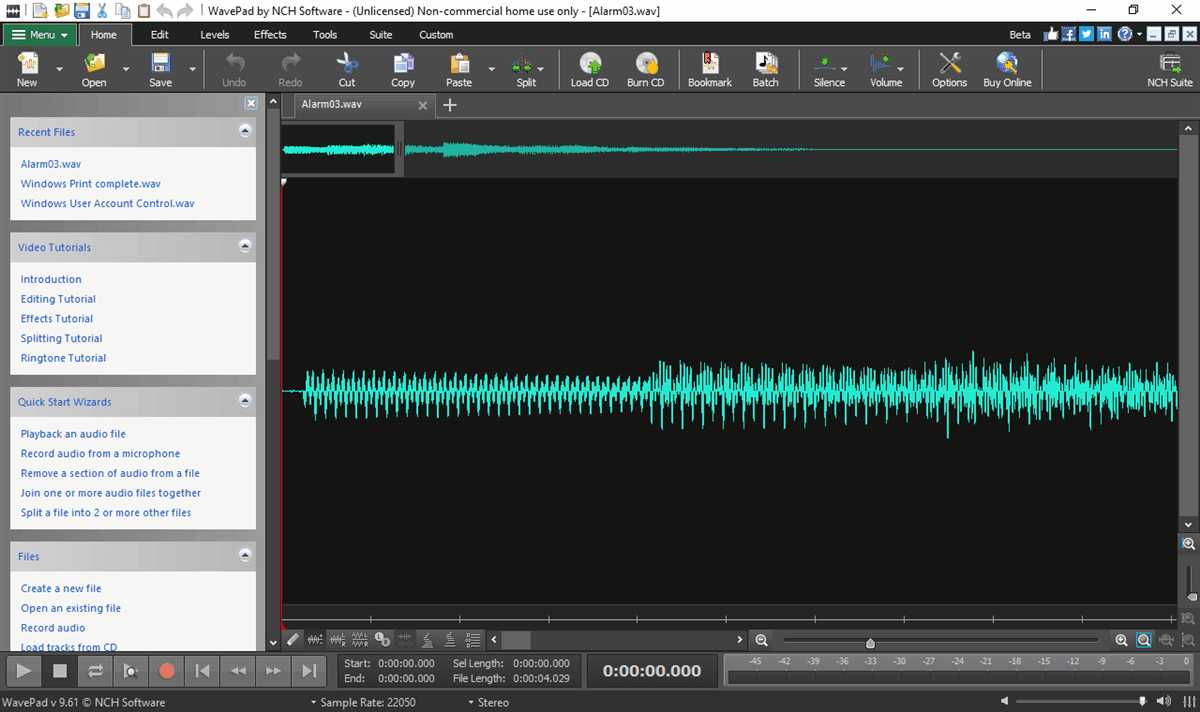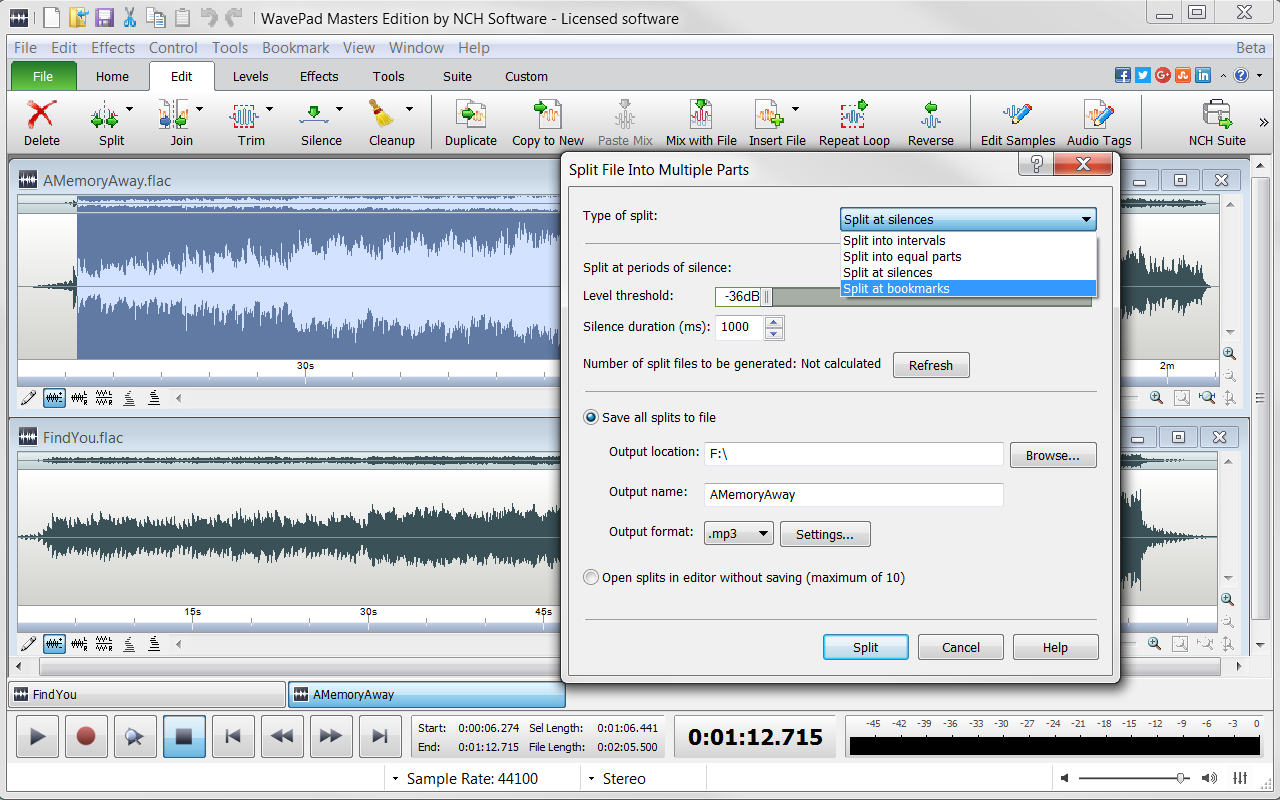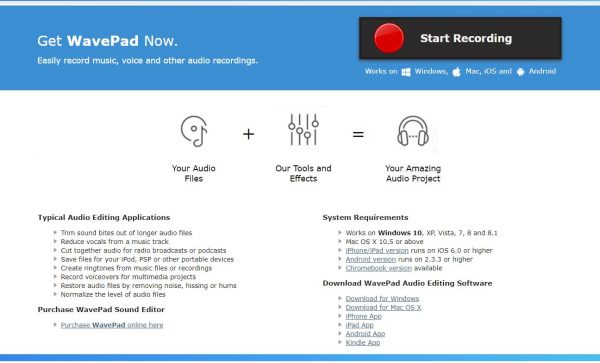- Wavepad Vocal Remover
- How To Use Wavepad To Remove Vocals
- Wavepad Vocal Remover App
- Wavepad Vocal Remover Extension
There are several Windows VST plug-ins that can be used in Audacity for vocal removal and isolation. For installation of VST plug-ins, see below. Voicetrap is a commercial plug-in featuring center channel removal by frequency-based and cepstral methods (that is, not a simple subtraction of one channel from the other). To remove vocals from a song in this vocal remover, you need to follow these steps: Load the song to Wavepad. Go to File tab, and click on Open to browse and open the song. After the song loads, go to the Effects tab, and click on Reduce Vocals option. This will open the audio track in WavePad audio editor; WavePad audio editor may be downloaded here. Back to VideoPad Video Editor Technical Support: Try VideoPad Video Editor Download VideoPad Video Editor free. Seeing and using the software first hand can answer most questions. Sound The starting point for everything WavePad does is sound. Sound is vibrating air traveling very fast like a wave. It is created by a vibrating object (e.g. Our vocal cords, a guitar string or a speaker) and can be detected by an ear or a microphone.
Cover image via
Use these audio tips (and a couple of plugins) to easily remove reverb and echo from dialogue.
Top image from ryanhall.co.za
Recording sound dialogue can prove challenging on set. Sometimes we find ourselves sacrificing ideal audio conditions for a beautiful shot. Whatever the case, we’ve all come across dialogue audio recorded with too much natural reverb present within the room.
If budget and time allows, ADR is the higher-quality option to replace your cavernous dialogue recording. Though as filmmakers often know, the best option isn’t always the most realistic in completing your project.

In any case, there are a few great plugins (compatible with Adobe Audition, Premiere Pro, and most audio/video editing software) that can actually “de-verb” your dialogue audio.
Don’t want to buy them? All of these plugins have trial-versions you can try out for free. Let’s take a look below:
- Acon Digital DeVerberate($99.90)
- SPL De-Verb($59.00)
- iZotope RX4($1,200)
Wavepad Vocal Remover
Here’s a video tutorial from Curtis Judd of Learn Light and Sound that covers the removal of echo and reverb from dialogue audio using two of the above plugins: Acon Digital DeVerberate and SPL De-Verb. After the video, we’ll look at the steps Judd took in his process.
This video tutorial was first shared by Curtis Judd on his YouTube channel. Thanks, Curtis!

Acon Digital DeVerberate Step-by-Step Tutorial
1. Open the plugin and select reduce room reverb from the preset menu. Listen to the dialogue audio with and without the plugin engaged.
2. Next, adjust the reverb time (the time it takes for the original source sound to reflect off of the walls and come back to the microphone)in the source reverb settings box. As a general rule of thumb, larger rooms require a greater amount of reverb time (in seconds). Enable the difference monitoring box. This allows you to hear the amount of reverb the plugin will be filtering from your dialogue audio. Adjust the reverb time parameter gradually while playing back the audio. Adjust until you begin to hear only the reverb from the dialogue.
3. Uncheck difference monitoring to hear what effect the plugin has on the dialogue. Next, adjust the reverb level (dB) parameter (the amount of reverb to reduce/add) balancing between reverb removal and avoiding artifacts.
4. Although your dialogue audio should be sounding pretty good at this point, there may be some artifacts in the audio from the reverb reduction. Next, we will use the spectral smoothing parameter to reduce these artifacts. Use this parameter carefully as higher values may bring back some reverb.
SPL De-Verb Step-by-Step Tutorial
1. Upon opening, you will find this plugin has a very simple interface with only two parameters: reverb reduction, and output gain. Select the preset titled Less Room – more direct from the preset selection menu.
2. Adjust the reverb reduction parameter until you cancel out most of the reflections, resulting in dry and directdialogue. As you turn the parameter counter-clockwise you will hear more reverb reduction.
No problem, right? Want some audio-centric tips and tricks? Check out these links from PremiumBeat:

How do you remove reverb from your audio? Got any tips you’d like to share? Let us know in the comments below.
Here is how to fix a p-pop in a recording using sound editing software. But first..
What IS a p-pop anyway?
If you do any voice recording at all, you've probably noticed this. When you say words that have 'P' and 'B' sounds (called 'plosives') in them into a microphone, the recording will sometimes sound like loud, low frequency 'booms' in the audio.
These 'p-pops' distort the audio recording for a second, and are not pretty. Recordings with lots of p-pops in a vocal are very distracting.
What causes it?
It's what happens when a burst of wind hits a microphone. It's especially pronounced when using a large diaphragm condenser mic like the one in the pic on the left - a Rode NT2-A.
There are things you can do to minimize or prevent (shya!) them (like a pop filter), which is the best medicine. But when they do get recorded, you'll want to know how to fix it after-the-fact. For this we use editing software.
One of the wonderful things about audio editing in the computer age is that you get to use your eyes as well as your ears. I have edited so many p-pops (caused by what linguists call 'plosives') that I can recognize what they LOOK like on a computer screen even before I hear them. Doctor copay price. For my voice, the come out looking like a capital letter 'N' in the waveform.

How to fix it once it is recorded?
You will need to use an effect called an equalizer, or EQ. For some basics on what that means, see my article 'What Is Equalization, Usually Called EQ?'
Since the plosive problem is basically caused by a rush of air from your lips hitting a microphone capsule fast and hard, what you have is a problem of volume.
The plosive was too loud compared to everything around it. Not only that, but most of the too-loud bits are in the low end..the bass frequencies. So the fix would be to turn down the volume of your voice when it is hitting the 'P.'
In an audio editor, like Audacity (which is open source) you zoom in on the plosive and select everything right up until the voice actually becomes audible. In other words, if the word was 'pot,' try not to get any of the -'ah' sound in your selection. You only want the 'P' sound. Then you just use a volume reduction tool to turn down JUST the 'P.' You may have to experiment ('undo' is the magic-bullet of computer audio editing!) with how much you turn it down, but that may be all you need to do.
How To Use Wavepad To Remove Vocals
What if changing the volume doesn't work?
If adjusting the volume doesn't get you there, you might just need to reduce the volume of PART of the plosive, the bass part. You do this using equalization (EQ). That is basically the same thing as volume, only you control what frequencies get turned up or down. Try reducing volume of frequencies below 200 Hz and leave everything else alone. Again, you may need to experiment.
Now you just lather, rinse, and repeat for every bothersome 'P' pop, and you're done. It's so easy to fix that I am baffled that some voice-overs still have them. At least you don't need to anymore.
See the video below for a way to do this using Reaper software. The idea is exactly the same. But the method is slightly different because Reaper is a digital audio workstation (DAW) which edits its audio in a 'non-destructive' way.
Here is how to do this in Audacity
And here is how to do it in Reaper

Wavepad Vocal Remover App
Time needed: 5 minutes.
How to Fix a P-Pop in Your Audio
- Find the p-popFind where the p-pop happens in your recording by listening in headphones
- Highlight JUST the 'p' Sound in Your Editing SoftwareZoom in and highlight ONLY the 'p' (or other plosive sound like 'b,' etc.). Be careful not to select any of the vowel sound that comes after the 'p' sound.
- Apply EQ EffectApply an equalizer effect (EQ) to the 'p.' Reduce the low frequencies in a slope going down and to the left, starting with about 200 Hz.
Isn't there a faster way?
Wavepad Vocal Remover Extension
Removing p-pops one at a time like I've shown is fine for short recordings. But it would take forever to do it like this for, say, an audiobook. Isn't there a way to get rid of all the p-pops in a larger section of audio without affecting the rest of the recording?
Actually there is! It isn't free, but Accusonus has a tool called ERA 5 Plosive Remover that can do this. It is a plugin that you can use in any software that can use VST plugins like both Audacity and Reaper. Indesign cc 2021. It is part of the ERA vocal repair plugin bundle that also includes other super useful tools like a de-esser, voice leveler, noise remover, and more.
This is how I get rid of most of my plosives now, and it has saved me a ton of time! If you're interested in learning more about this tool, CLICK HERE.
Learn the above technique and more audio editing in our video tutorials at Home Brew Audio!
